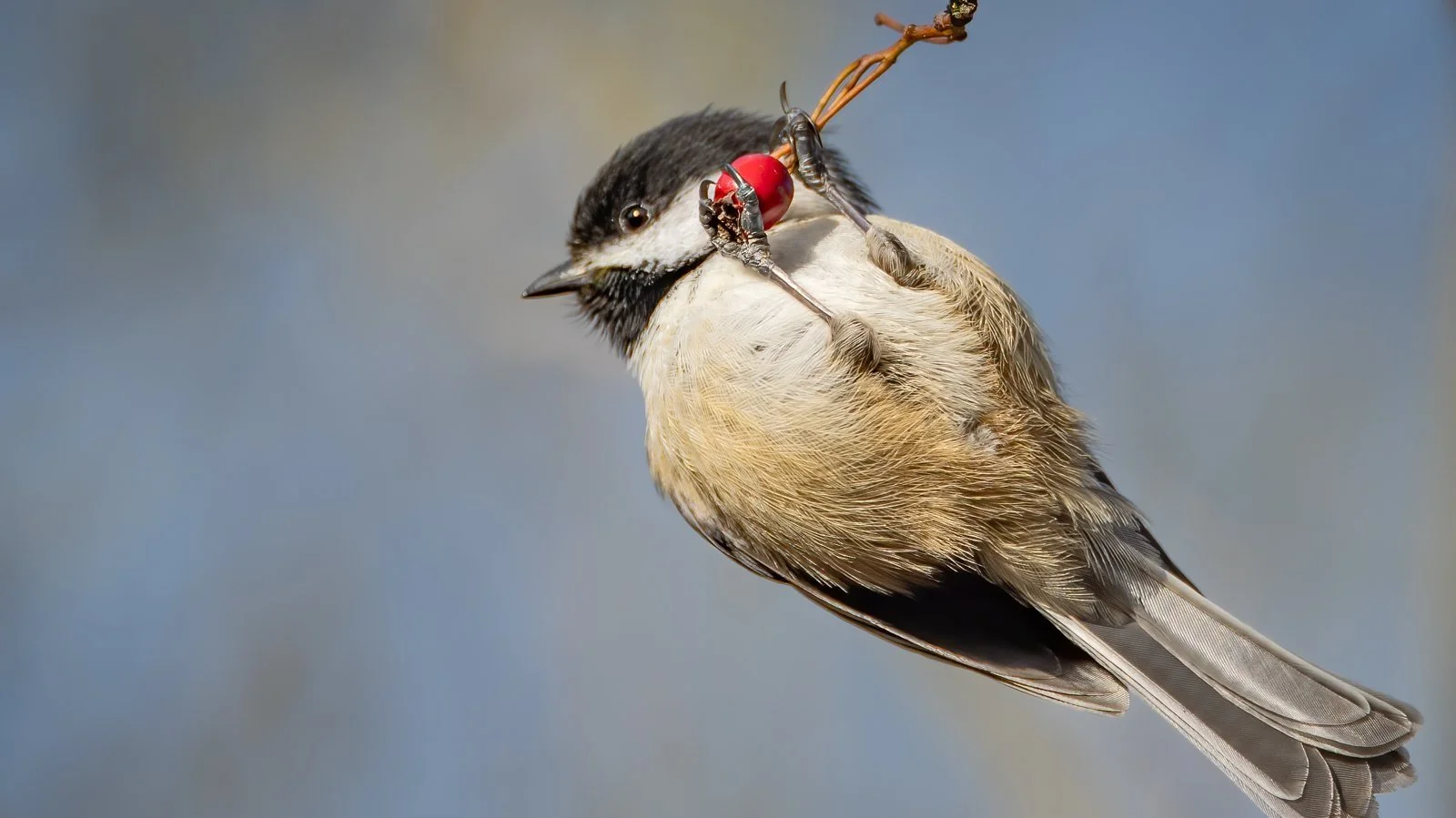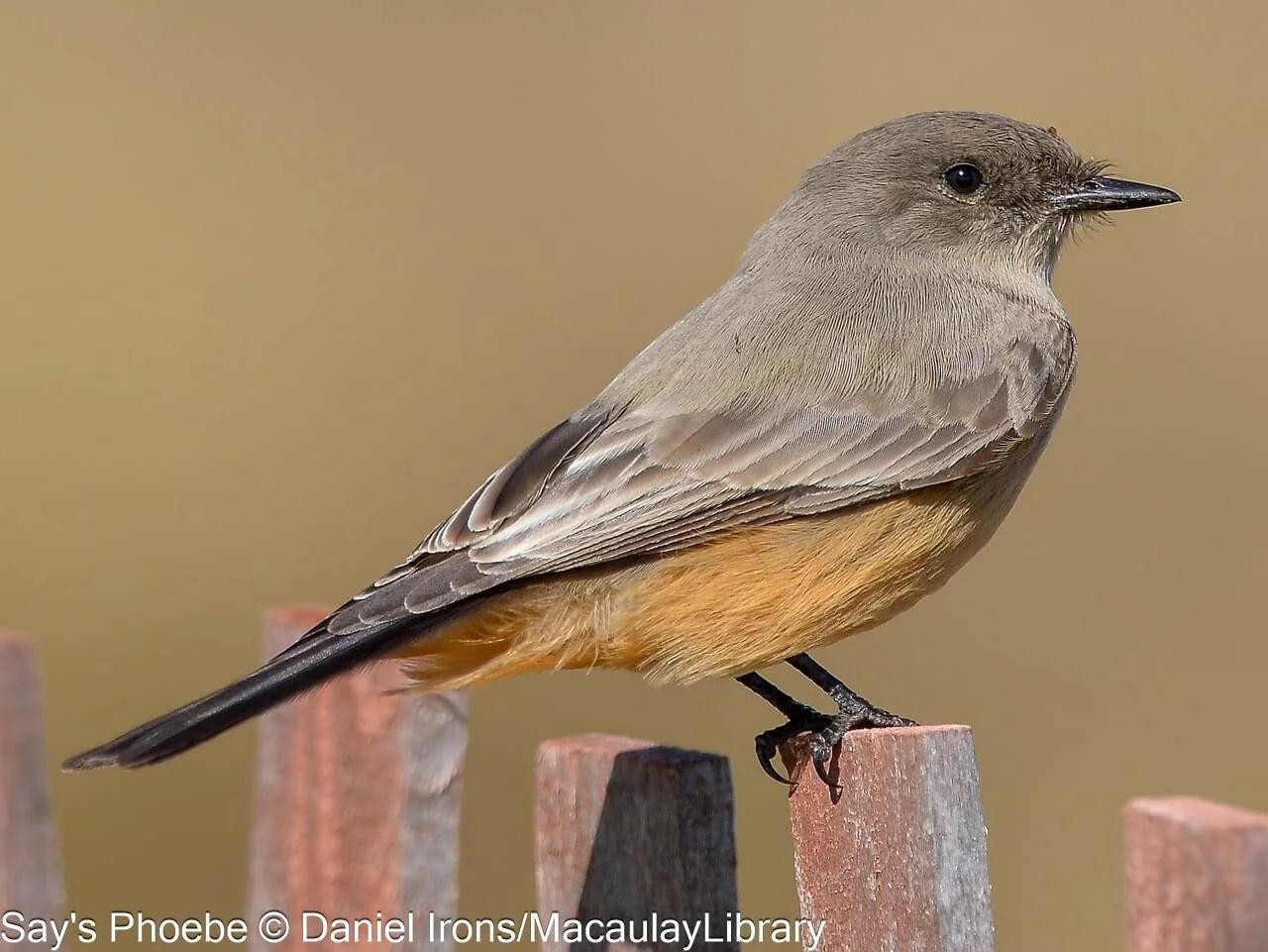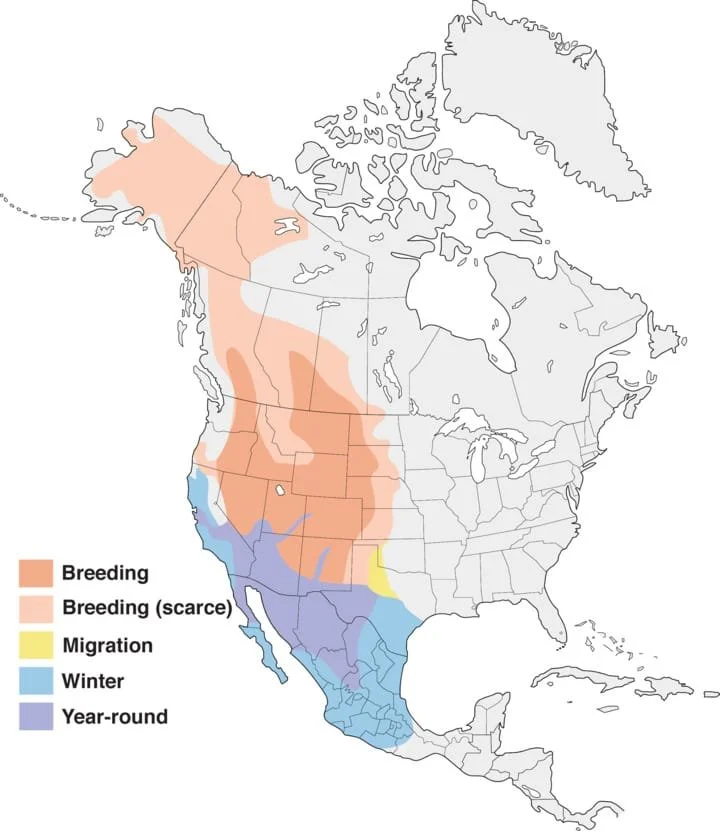Banner Photo by Ann Kramer
Featured Bird
Say’s Phoebe by Daniel Irons/Macaulay Library
MEET THE SAY’S PHOEBE (Sayornis saya) – by Jeff Sinker
Unlike its dapper cousin, the Black Phoebe, always dressed for a black-tie event, the Say’s Phoebe is more subdued. Sporting brownish-gray upper parts, a blackish tail, and a gray breast, the Say’s Phoebe blends in well with its arid environment; and, also unlike its cousin, is not usually associated with watercourses. It is the northernmost phoebe in North America and may nest on the Alaska pipeline.
Named by Napoleon’s nephew, Charles Bonaparte, after the American naturalist Thomas Say, who first described this phoebe in 1819, the Say’s Phoebe has been in North America for about 400,000 years. Fossils have been discovered in Arizona, California, New Mexico and Texas. Not only is it common in these states, but it can generally be found in remote, dry, open country throughout western North America.
Insects form the basis of their diet, and Say’s Phoebes typically perch on fence posts, medium-sized shrubs, and tree limbs from where they either fly out to snatch insects in mid-air or pounce on the ground in pursuit of their meal.
When it is time to nest, the pair will investigate potential nest sites together. Phoebes are not shy around humans and often nest on buildings, if shelter directly above the nest is available (such as an eave). A successful pair raises 1-2 broods per season (3-6 eggs; 12-18 days incubation; 13-21 days nestling). Say’s Phoebes have experienced a small population increase between 1966-2015, potentially benefitting from an increase in nesting sites from man-made structures built within their range.
Learn more: www.allaboutbirds.org/guide/Says_Phoebe
Photo credit: Say’s Phoebe by Daniel Irons/Macaulay Library; www.allaboutbirds.org/guide/Says_Phoebe
Range map: www.allaboutbirds.org/guide/Says_Phoebe


